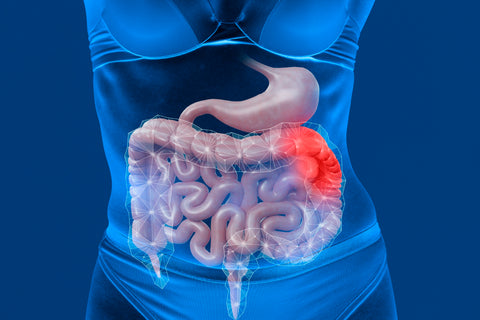
 Instagram
Instagram
How Long Before Bulimia Damages Esophagus?


Related products

Bulimia nervosa, a serious and potentially life-threatening eating disorder, is characterised by a cycle of binge eating followed by compensatory behaviors such as self-induced vomiting. The prevalence of bulimia, according to a recent study published in The Lancet, is estimated to affect approximately 1-2% of the population, with a higher incidence observed in young women aged 12-35. Dr. Emily Thompson, a leading expert in eating disorders, emphasises that "bulimia is more than just an eating disorder; it's a complex psychological condition that requires comprehensive understanding and treatment."
The impact of bulimia on the esophagus is profound and multifaceted. Repeated episodes of vomiting can lead to a range of esophageal complications. Dr. James Peterson, a gastroenterologist, explains, "The recurrent regurgitation of stomach acids during vomiting episodes can cause severe irritation and damage to the esophageal lining, leading to conditions such as esophagitis and Barrett's esophagus." These conditions, if left untreated, can escalate into more serious complications, including an increased risk of esophageal cancer.
The complexity of bulimia's impact on the esophagus is not limited to physical damage. The psychological aspects of the disorder often contribute to delayed diagnosis and treatment. "Patients with bulimia may experience shame or guilt about their condition, leading to underreporting of symptoms and delayed medical care," notes Dr. Thompson. This delay can exacerbate the severity of esophageal damage, making it imperative to address both the mental and physical aspects of the disorder in tandem.
Statistics reveal the gravity of this condition. A study in the Journal of Digestive Diseases found that individuals with bulimia are at a significantly higher risk of developing esophageal disorders compared to the general population. This alarming statistic underscores the importance of this article's key theme: understanding and addressing the timeline and severity of esophageal damage caused by bulimia.
How Long Before Bulimia Damages Esophagus?
The time it takes for bulimia to damage the esophagus can vary widely depending on the frequency and severity of vomiting. Damage can occur as early as a few weeks to months after regular episodes begin. Acid reflux induced by frequent vomiting can lead to inflammation, tears, or even rupture of the esophagus in severe cases. It is crucial for individuals experiencing such symptoms to seek medical advice promptly.
The act of frequent vomiting can lead to several problems in the esophagus:
- Esophagitis: This is inflammation of the esophagus, which can occur due to the stomach acids re-entering the esophagus during vomiting. Symptoms include pain and difficulty swallowing.
- Mallory-Weiss tears: These are tears in the mucous membrane of the esophagus or stomach, which can cause bleeding and are often a result of forceful vomiting.
- Barrett's Esophagus: Over time, repeated exposure to stomach acid can lead to changes in the cells lining the esophagus, potentially leading to this condition, which is a precursor to esophageal cancer.
It's crucial for individuals experiencing any symptoms of esophageal discomfort to seek medical advice promptly. Treatment for the esophagus must go hand-in-hand with addressing the underlying bulimic behavior through professional help to prevent further complications and promote recovery.
What is Bulimia?
Bulimia nervosa, often simply known as bulimia, is a psychological eating disorder marked by a destructive pattern of eating behavior characterized by recurrent binge eating followed by compensatory actions such as self-induced vomiting, misuse of laxatives, fasting, or excessive exercise. Dr. Alice Martin, a renowned psychiatrist specializing in eating disorders, describes bulimia as "a serious mental health condition that goes beyond food. It's deeply rooted in psychological issues related to self-esteem, control, and coping mechanisms."
The psychological aspects of bulimia are complex and multifaceted. Individuals with this disorder often suffer from distorted body image and an overwhelming fear of gaining weight. This leads to a cycle of emotional distress, which is temporarily relieved by binge eating, followed by feelings of guilt and shame that trigger purging behaviors. Dr. Martin notes, "Bulimia is as much about emotions as it is about food. It's a way for some individuals to cope with emotional distress and negative self-perception." Anxiety, depression, and other mood disorders frequently coexist with bulimia, making the psychological treatment a critical component of recovery.
Physically, bulimia can have numerous detrimental long term effects on the body. According to Dr. Hannah Lee, a gastroenterologist, "The repeated act of vomiting can lead to serious health issues, including electrolyte imbalances, gastrointestinal problems, and severe dental erosion." The strain of frequent vomiting can cause inflammation and tears in the esophagus, leading to conditions like esophagitis. Moreover, bulimia can affect cardiovascular health, leading to irregular heart rhythms and heart failure, as a result of electrolyte imbalances.
Common behaviors associated with bulimia are often hidden due to shame and guilt, making the disorder challenging to detect. Dr. Lee states, "Patients often go to great lengths to conceal their bingeing and purging habits, which can include eating in secret, frequent trips to the bathroom after meals, and the use of laxatives or diuretics." Other signs include an obsessive preoccupation with body weight and shape, abnormal blood test results (such as low potassium levels), and dental issues like enamel erosion and cavities, which are often the result of stomach acid exposure during vomiting.
The compulsive nature of the disorder means that individuals often feel powerless to stop the cycle of bingeing and purging, despite the negative physical and psychological consequences. "The behaviors associated with bulimia are not choices, but rather symptoms of a complex psychological issue," Dr. Martin explains. This misunderstanding often leads to stigma and judgment, which can further hinder the willingness of those affected to seek help.
Understanding bulimia necessitates an exploration of both its psychological underpinnings and physical manifestations. Recognizing the common behaviors associated with this eating disorder is crucial for early intervention and effective treatment. As Dr. Martin concludes, "Comprehensive care that addresses both the mind and body is essential for individuals struggling with bulimia. Empathy, understanding, and professional guidance are key to helping them navigate the path to recovery."
The Esophagus and Its Function
The esophagus is a crucial component of the human digestive system, serving as a conduit between the mouth and the stomach. Dr. Emily Green, a gastroenterologist, describes it as "a muscular tube approximately 25 centimeters long in adults, connecting the pharynx to the stomach." The anatomy of the esophagus is specialized to facilitate the movement of food. It consists of several layers, including mucosa, submucosa, muscularis externa, and adventitia, each playing a specific role in its function.
The primary role of the esophagus in digestion is to transport food from the mouth to the stomach. This is achieved through a process called peristalsis—a series of wave-like muscle contractions. Dr. Green explains, "Once you swallow, peristalsis takes over to move food efficiently down the esophagus, through the lower esophageal sphincter, and into the stomach." This sphincter acts as a gatekeeper, preventing the backflow of stomach contents, including acidic gastric juices, into the esophagus.
Normal esophageal health is characterized by the effective and painless transfer of food along this pathway. "A healthy esophagus doesn’t cause discomfort. Swallowing is smooth and unobtrusive," says Dr. Green. However, various factors can disrupt this process, leading to conditions like gastroesophageal reflux disease (GERD), where stomach acid frequently flows back into the esophagus, causing irritation.
Maintaining esophageal health is crucial for overall digestive well-being. Factors contributing to a healthy esophagus include proper diet, avoiding substances that can irritate the esophagus (such as alcohol and tobacco), and managing conditions like acid reflux. Dr. Green emphasizes, "Preventive measures like eating smaller, more frequent meals and avoiding lying down immediately after eating can significantly contribute to maintaining esophageal health."
In the context of bulimia, the esophagus is subjected to recurrent exposure to stomach acids due to vomiting, which can lead to a range of esophageal disorders. Dr. Green cautions, "The repeated mechanical and chemical trauma to the esophagus in bulimia can lead to serious complications, including esophagitis, Barrett’s esophagus, and an increased risk of esophageal cancer."
Understanding the anatomy and function of the esophagus is key to recognizing the impact of disorders like bulimia. It highlights the importance of maintaining esophageal health and the potential consequences when it is compromised. As Dr. Green concludes, "Awareness of the esophagus's role and the importance of its health is a vital part of understanding digestive wellness and the broader impacts of eating disorders."
Bulimia’s Impact on the Esophagus
Bulimia nervosa, primarily characterized by recurrent binge-eating episodes followed by purging, significantly impacts the esophagus, leading to various health complications. Dr. Laura Benson, a gastroenterology specialist, explains, "The act of self-induced vomiting exposes the esophagus to gastric acid, causing mechanical and chemical damage to its delicate lining." This exposure is the primary mechanism through which bulimia inflicts harm on the esophagus.
The immediate and short-term effects of bulimia on the esophagus can be quite distressing. Dr. Benson states, "Patients may experience symptoms like heartburn, acid reflux, and sore throat as early signs of damage." The frequent contact with stomach acid can lead to esophagitis, an inflammation of the esophagus, causing pain and difficulty in swallowing. Additionally, repeated vomiting can cause small tears in the esophageal lining, known as Mallory-Weiss tears, which can lead to bleeding.
In the long term, the consequences of bulimia on the esophagus can be severe and sometimes irreversible. One of the most concerning outcomes is the development of Barrett’s esophagus, a condition where the lining of the esophagus changes to resemble the lining of the intestine. Dr. Benson warns, "Barrett’s esophagus is particularly troubling as it significantly increases the risk of developing esophageal cancer." Furthermore, chronic inflammation and damage can lead to strictures, where the esophagus narrows, making swallowing difficult and painful.
Dr. Rachel Simmons, a clinical psychologist specializing in eating disorders, highlights the importance of understanding these risks. "Awareness of the physical consequences of bulimia, like esophageal damage, is crucial for patients and healthcare providers. It underscores the need for early intervention and comprehensive treatment of the disorder," she says.
The recurrent nature of bulimic behaviors often leads to a cumulative effect on the esophagus. Dr. Benson adds, "The severity of esophageal damage is typically correlated with the duration and frequency of bulimic episodes. The longer the condition goes untreated, the higher the risk and severity of esophageal complications."
The impact of bulimia on the esophagus is a significant concern that necessitates prompt and effective medical intervention. Dr. Simmons reiterates, "Treating bulimia is not just about addressing psychological issues; it's also about mitigating the physical damage caused by the disorder, including protecting the esophagus from further harm." This comprehensive approach is essential for the full recovery and long-term health of individuals suffering from bulimia.
Acid-Base Imbalances in Bulimia

Bulimia nervosa significantly impacts the body’s acid-base balance, a delicate equilibrium vital for normal physiological functions. Dr. Karen Mitchell, an expert in internal medicine, explains, "The body's acid-base balance refers to the regulation of hydrogen ion concentration in bodily fluids, which is essential for maintaining optimal functioning of cells and organs." The balance is tightly regulated, with the kidneys and lungs playing a crucial role in maintaining a pH within the narrow range of 7.35 to 7.45.
A common acid-base disturbance in bulimia is metabolic alkalosis, a condition characterized by an increase in blood pH. Dr. Mitchell states, "Metabolic alkalosis in bulimia primarily results from excessive vomiting, leading to loss of hydrochloric acid from the stomach." The body attempts to compensate for this loss, often resulting in an increased blood pH level.
The causes of metabolic alkalosis in bulimia are multifactorial. Repeated vomiting leads to the direct loss of stomach acids, while dehydration and electrolyte imbalances, such as a decrease in potassium and sodium levels, contribute further to this condition. Dr. Mitchell elaborates, "In response to purging, the kidneys try to retain bicarbonate to compensate for the loss of acid, exacerbating the alkalosis."
The effects of metabolic alkalosis in bulimia can be wide-ranging and harmful. According to Dr. Mitchell, "If left unaddressed, metabolic alkalosis can disrupt normal cellular functions and organ systems, leading to muscle weakness, electrolyte imbalances, and in severe cases, seizures and arrhythmias." Moreover, these imbalances can hinder the effectiveness of various medications, complicating the treatment of bulimia and its associated conditions.
Signs and symptoms of acid-base imbalances in bulimia can be subtle initially but become more pronounced as the condition progresses. Patients may experience symptoms like confusion, tremors, muscle cramps, and heart palpitations. Dr. Mitchell warns, "These symptoms should be taken seriously, as they indicate significant disturbances in the body’s homeostasis."
Dr. Rachel Simmons, a psychologist, emphasizes the importance of considering these physical symptoms in the context of treating bulimia. "Understanding and addressing the physical manifestations of bulimia, such as acid-base imbalances, is critical in providing holistic care to patients," she advises.
The acid-base imbalances, particularly metabolic alkalosis, are a significant complication of bulimia that requires careful monitoring and management. Dr. Mitchell concludes, "Recognizing and treating metabolic alkalosis in bulimia is crucial not only for stabilizing the patient's immediate physical health but also for facilitating the overall recovery process." This comprehensive approach to treatment highlights the interconnectedness of physical and psychological health in eating disorders.
Timeline of Esophageal Damage
The timeline of esophageal damage in individuals with bulimia can vary greatly, influenced by several key factors. According to Dr. Olivia Hart, a gastroenterologist with extensive experience in treating eating disorders, "The onset and progression of esophageal damage in bulimia patients depend on the frequency and intensity of purging behaviors, individual physiology, and the duration of the disorder."
Factors Influencing the Onset of Damage
The primary factor influencing the onset of esophageal damage is the frequency of purging. Dr. Hart explains, "Regular exposure to stomach acid during frequent purging episodes can rapidly accelerate esophageal damage." Additionally, the method of purging, particularly self-induced vomiting, directly impacts the esophagus. The individual’s baseline esophageal health and genetic predispositions also play a role. Nutritional deficiencies common in bulimia can weaken the esophageal tissue, making it more susceptible to damage.
Early Signs and Symptoms to Watch For
The early signs and symptoms of esophageal damage are critical for prompt diagnosis and intervention. Dr. Hart lists several indicators: "Patients may initially experience mild symptoms like heartburn, acid reflux, and difficulty swallowing." Other early signs include sore throat, hoarseness, and a sensation of food being stuck in the throat. Recognizing these symptoms is crucial, as they often precede more severe complications.
Progression of Esophageal Damage Over Time
If left untreated, the esophageal damage can progress significantly over time. Dr. Hart warns, "Chronic exposure to stomach acids can lead to more serious conditions such as esophagitis, Barrett’s esophagus, and in extreme cases, esophageal cancer." Esophagitis, an inflammation of the esophagus, can develop into ulcers, causing pain and bleeding. Barrett's esophagus, a precancerous condition, occurs when the cells lining the lower esophagus change due to repeated acid exposure. The risk of developing esophageal cancer increases with the duration and severity of the condition.
Dr. Rachel Simmons, a psychologist, emphasizes the psychological impact of this progression. "As the physical symptoms worsen, they can exacerbate the psychological distress in bulimia patients, creating a vicious cycle that makes recovery more challenging," she notes.
Understanding the timeline of esophageal damage in bulimia is crucial for effective treatment and prevention of long-term complications. Dr. Hart concludes, "Early recognition and intervention are key. By addressing both the eating disorder and its physical manifestations, we can significantly improve patient outcomes." This comprehensive approach underscores the importance of integrating medical and psychological care in the treatment of bulimia.
Risk Factors and Complications

The risk factors and complications associated with bulimia, particularly concerning the esophagus, are diverse and multifaceted. Understanding these elements is critical for prevention, early detection, and effective treatment of the disorder and its associated physical health issues.
Individual Risk Factors
The individual risk factors for developing esophageal complications due to bulimia are varied. Dr. Natalie Turner, an expert in eating disorders, identifies key factors: "The frequency of purging behaviors is a significant risk factor. More frequent purging leads to increased exposure of the esophagus to stomach acids." In addition, the duration of bulimia plays a crucial role. "The longer a person has bulimia, the greater the likelihood of developing severe esophageal damage," Dr. Turner states. Other individual factors include the method of purging (vomiting being the most damaging to the esophagus), nutritional status, and overall physical health.
Potential Complications
Bulimia can lead to a range of serious complications related to esophageal health. Dr. Turner outlines several of these:
-
Esophagitis: Inflammation of the esophagus is common due to repeated exposure to stomach acid. Symptoms include pain, difficulty swallowing, and in severe cases, bleeding.
-
Barrett's Esophagus: A condition where the lining of the esophagus changes to resemble intestinal lining, as a result of chronic acid exposure. Dr. Turner warns, "Barrett's esophagus is a significant risk factor for developing esophageal cancer."
-
Esophageal Cancer: Long-term damage and changes in the esophageal lining can increase the risk of esophageal adenocarcinoma, a type of cancer. "Although it's a rare complication, the risk is markedly higher in individuals with a long history of bulimia," explains Dr. Turner.
-
Acid-Base Disturbances: As Dr. Karen Mitchell previously discussed, metabolic alkalosis is a common complication due to recurrent vomiting, leading to imbalances in the body's acid-base equilibrium.
Dr. Rachel Simmons, a psychologist, highlights the interconnected nature of these risks and complications. "The physical complications of bulimia, such as esophageal damage, can further complicate the psychological treatment of the disorder, creating a complex clinical picture that requires a multidisciplinary treatment approach," she notes.
The risk factors and potential complications associated with bulimia, particularly in relation to esophageal health, are significant and warrant comprehensive medical attention. Dr. Turner concludes, "Awareness of these risks is crucial for both patients and healthcare providers to ensure early intervention and prevent long-term complications." This comprehensive understanding is key to providing effective care for individuals suffering from bulimia.
Diagnosis and Detection

The diagnosis and detection of esophageal damage and acid-base imbalances in bulimia are critical for initiating timely and effective treatment. Accurate diagnosis often involves a combination of clinical evaluation, diagnostic tests, and a high index of suspicion, particularly in patients with known or suspected bulimia.
Methods for Diagnosing Esophageal Damage and Acid-Base Imbalances
-
Endoscopy: Dr. Olivia Hart, a gastroenterologist, explains, "Endoscopy is a key diagnostic tool for assessing esophageal damage. It allows direct visualization of the esophagus and can identify inflammation, tears, or Barrett’s esophagus." This procedure involves inserting a flexible tube with a camera (endoscope) through the mouth into the esophagus.
-
Blood Tests: To diagnose acid-base imbalances like metabolic alkalosis, blood tests are essential. Dr. Karen Mitchell states, "Blood tests can reveal imbalances in electrolytes, bicarbonate levels, and pH, indicative of metabolic alkalosis resulting from purging behaviors in bulimia."
-
Biopsy: During an endoscopy, a biopsy may be performed to collect tissue samples from the esophagus. "This is particularly important for detecting cellular changes indicative of Barrett's esophagus," adds Dr. Hart.
-
Other Imaging Tests: Depending on symptoms and findings, other imaging tests like X-rays or CT scans may be used to assess the structure of the esophagus and identify any abnormalities.
Challenges in Early Detection
Early detection of esophageal damage and acid-base imbalances in bulimia is fraught with challenges. Dr. Rachel Simmons, a psychologist, notes, "Many individuals with bulimia may be hesitant to seek medical help due to stigma or denial of their disorder." This delay in seeking treatment can lead to more advanced stages of esophageal damage by the time of diagnosis.
Furthermore, symptoms of esophageal damage can be subtle or mistaken for other common gastrointestinal issues, leading to misdiagnosis or delayed diagnosis. Dr. Hart emphasizes, "A high degree of clinical suspicion is required, especially in patients with known eating disorders."
The Role of Regular Medical Check-Ups
Regular medical check-ups play a vital role in the early detection of esophageal damage and acid-base imbalances in bulimia. Dr. Mitchell advises, "Routine medical evaluations, including blood tests and physical examinations, can help in early identification of complications arising from bulimia." These check-ups provide an opportunity for healthcare providers to monitor the health of individuals with bulimia, offer counseling, and intervene promptly when complications are suspected.
Effective diagnosis and detection of esophageal damage and acid-base imbalances in bulimia require a combination of diagnostic techniques, awareness of the disorder's signs and symptoms, and regular medical follow-ups. Dr. Simmons concludes, "An integrated approach involving medical and psychological professionals is essential in managing bulimia, ensuring both physical and mental health concerns are addressed." This holistic approach is key to improving outcomes for individuals suffering from bulimia.
Treatment and Management
The treatment and management of bulimia, especially concerning esophageal damage and metabolic alkalosis, require a multifaceted approach that includes medical interventions, psychological therapies, and lifestyle modifications.
Medical Treatments for Esophageal Damage and Metabolic Alkalosis
-
Esophageal Damage: Treatment for esophageal damage typically involves medications to reduce stomach acid production and promote healing. Proton pump inhibitors (PPIs) or H2 blockers are commonly prescribed. Dr. Olivia Hart notes, "These medications not only alleviate symptoms like heartburn but also aid in the healing of the esophageal lining." In cases of severe esophagitis or Barrett's esophagus, more intensive treatments or surveillance may be required.
-
Metabolic Alkalosis: Addressing metabolic alkalosis involves correcting the electrolyte imbalances. Dr. Karen Mitchell states, "Treatment may include electrolyte supplementation, especially potassium, and addressing the underlying cause, which in the case of bulimia, is the purging behavior."
Therapeutic Approaches for Bulimia Nervosa
The psychological treatment of bulimia nervosa is crucial and often involves a combination of therapies:
-
Cognitive-Behavioral Therapy (CBT): Considered the gold standard for treating bulimia, CBT focuses on identifying and changing negative thought patterns and behaviors related to food, body image, and self-esteem.
-
Interpersonal Psychotherapy (IPT): This therapy addresses issues in personal relationships and how they impact eating behaviors.
-
Nutritional Counseling: Working with a dietitian can help normalize eating patterns and restore nutritional health.
Dr. Rachel Simmons emphasizes, "Therapeutic interventions for bulimia nervosa are not just about treating the eating disorder symptoms but also addressing the underlying emotional and psychological issues."
Lifestyle Changes and Home Care
Lifestyle modifications play a significant role in the management of bulimia and its complications:
-
Dietary Adjustments: Adopting a balanced diet and regular meal patterns can help reduce binge-purge cycles. Dr. Hart suggests, "Eating smaller, more frequent meals can also alleviate esophageal discomfort."
-
Stress Management: Techniques like mindfulness, meditation, and yoga can help manage stress and reduce the triggers for bulimic behaviors.
-
Avoiding Trigger Foods: Steering clear of foods that trigger binge eating or are harsh on the esophagus when purged (like acidic or spicy foods) is advisable.
-
Regular Medical Check-Ups: Ongoing monitoring of esophageal health and metabolic status is important in preventing complications.
The treatment and management of bulimia, particularly in relation to esophageal damage and metabolic alkalosis, require a comprehensive approach that includes medical treatment, psychological therapy, and lifestyle changes. Dr. Simmons highlights, "An integrated treatment plan tailored to the individual’s needs is the most effective way to manage bulimia and its physical and psychological complications." This holistic approach is essential for the recovery and long-term health of individuals with bulimia.
Prevention and Early Intervention
Prevention and early intervention are critical strategies in mitigating the onset of bulimia and its detrimental effects on the esophagus and acid-base balance. Implementing these measures can significantly reduce the risk of long-term physical and psychological complications.
Strategies to Prevent Bulimia and Its Effects
-
Education and Awareness: Increasing awareness about eating disorders and their consequences is fundamental. Dr. Rachel Simmons emphasizes, "Education in schools and communities about body positivity, healthy eating habits, and the dangers of eating disorders can play a key role in prevention."
-
Screening Programs: Implementing screening programs in schools and healthcare settings can help identify individuals at risk of developing bulimia. Early detection is crucial for effective intervention.
-
Promoting Healthy Eating Habits: Encouraging balanced eating patterns and a healthy relationship with food from a young age can reduce the incidence of eating disorders. Nutritional education and resources should be made widely available.
-
Emotional Support and Stress Management: Teaching stress management techniques and providing emotional support can help individuals cope with emotional triggers that might lead to bulimic behaviors.
Importance of Early Intervention
Early intervention in bulimia is vital for several reasons:
-
Reducing Physical Harm: The sooner bulimia is treated, the lower the risk of severe esophageal damage and acid-base imbalances. Dr. Olivia Hart notes, "Early intervention can prevent the progression of esophageal injuries and other related health issues."
-
Psychological Benefits: Addressing bulimia early on can lead to more effective psychological recovery. Dr. Simmons adds, "Early intervention can disrupt the cycle of negative eating behaviors and distorted self-perception, leading to better long-term mental health outcomes."
-
Improving Treatment Success: Early detection and treatment of bulimia increase the likelihood of successful recovery. It allows for a comprehensive approach to treatment before the disorder becomes deeply ingrained.
Resources and Support Systems
Various resources and support systems are essential in the prevention and early intervention of bulimia:
-
Mental Health Services: Access to psychologists, psychiatrists, and counselors who specialize in eating disorders is crucial.
-
Nutritional Counseling: Dietitians can provide guidance on healthy eating and restoring nutritional balance.
-
Support Groups: Support groups offer a platform for individuals to share experiences and gain support from others who are facing similar challenges.
-
Online Resources: Websites, online forums, and helplines provide accessible information and support for individuals who might not be ready to seek face-to-face help.
-
Family and Community Support: Engaging family members and communities in the treatment process can provide a supportive environment for recovery.
Prevention and early intervention in bulimia are crucial for reducing the risk of esophageal damage and metabolic disturbances. Dr. Simmons concludes, "A proactive approach, encompassing education, early detection, and comprehensive support, is key to preventing bulimia and mitigating its effects on individuals' physical and mental health." These strategies are fundamental in the fight against bulimia and its far-reaching consequences.
Case Studies and Patient Perspectives
The journey of individuals who have battled bulimia, along with their experiences of esophageal damage and metabolic alkalosis, offers invaluable insights and lessons. These real-life examples highlight the challenges, complexities, and triumphs in the path to recovery.
Real-Life Examples of Individuals Affected
Case Study 1: Emma's Story
Emma, a 26-year-old graphic designer, struggled with bulimia for eight years. Her frequent episodes of purging led to severe esophagitis, characterized by intense chest pain and difficulty swallowing. Through a combination of medical treatment and cognitive-behavioral therapy, Emma managed to overcome her eating disorder. Her story underscores the importance of holistic treatment in healing both the mind and body.
Case Study 2: David's Experience
David, a 32-year-old teacher, was diagnosed with metabolic alkalosis as a complication of his bulimia. He suffered from muscle weakness and irregular heartbeats, which significantly impacted his daily life. His recovery journey involved electrolyte supplementation and intensive psychological therapy. David's case highlights the critical nature of addressing both the physical and psychological aspects of bulimia.
Insights from Patients’ Experiences
Patients like Emma and David often emphasize the significance of early intervention. They highlight how a lack of awareness about the physical consequences of bulimia delayed their seeking help. Many express gratitude for the comprehensive care they received, which addressed both their psychological disorder and its physical manifestations.
Recovery Stories and Lessons Learned
Recovery stories often reveal a common theme: the resilience of the human spirit and the effectiveness of comprehensive, multidisciplinary treatment approaches. These individuals frequently become advocates for mental health and eating disorder awareness, using their experiences to educate others and offer hope.
Conclusion
This article has explored the profound impact of bulimia on the esophagus and the body's acid-base balance. Key points include the mechanisms of esophageal damage in bulimia, the importance of early detection and intervention, and the comprehensive treatment approaches necessary for recovery.
The management and prevention of esophageal damage and metabolic alkalosis in bulimia require a multifaceted approach. This involves medical treatment for physical symptoms, psychological therapies to address the underlying causes of the eating disorder, and lifestyle modifications to support long-term recovery.
The stories of individuals like Emma and David provide powerful testimony to the challenges posed by bulimia and the potential for recovery. Their experiences highlight the importance of early intervention and the effectiveness of holistic treatment strategies.
It is crucial for individuals suffering from bulimia, as well as their families and healthcare providers, to understand the serious implications of this disorder on both physical and mental health. Seeking help and support is a critical first step towards recovery. As we have seen through patient experiences, with the right treatment and support, overcoming bulimia and its associated health issues is not only possible but also the beginning of a new, healthier chapter in life.






























 Rated Excellent by 26,523+ Reviews
Rated Excellent by 26,523+ Reviews